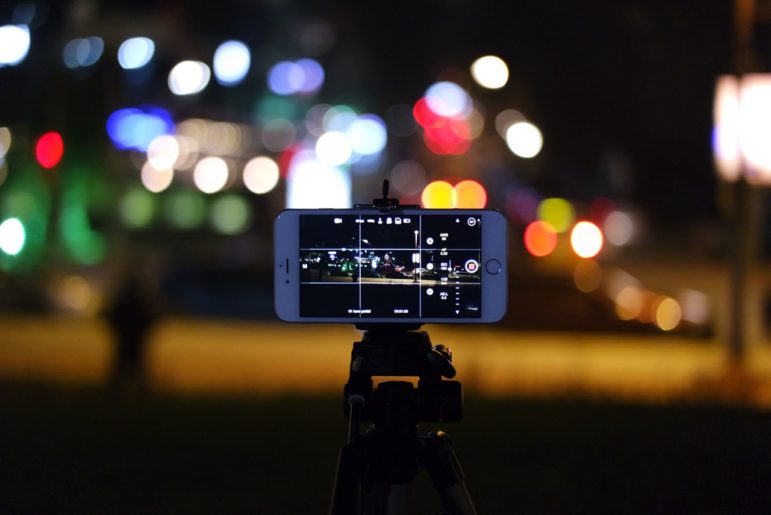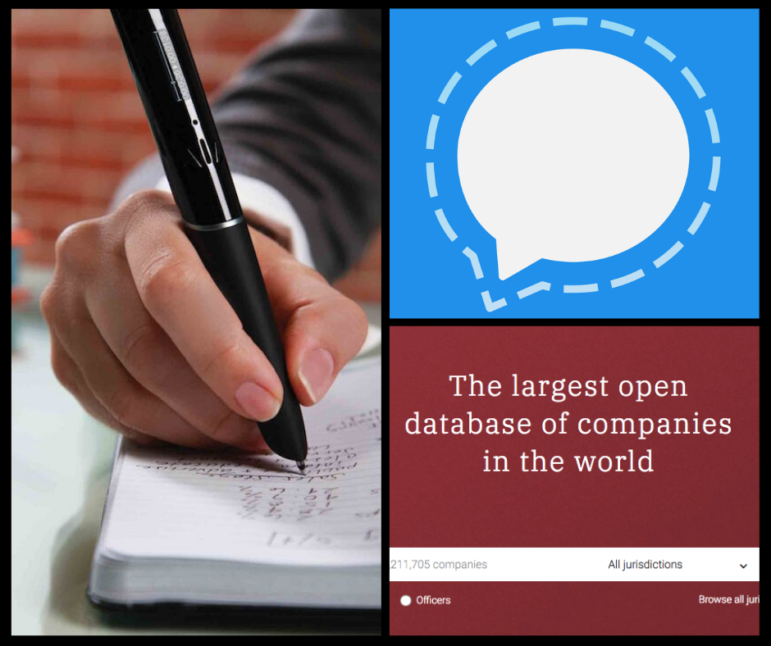

My Favorite Tools: Emmanuel Freudenthal
العربية | বাংলা | Français|Español
What tools do investigative journalists use in their work? In this new series, we ask journalists from around the world to share some of their favorites with GIJN’s readers.

Emmanuel Freudenthal.
This week, we spoke with Emmanuel Freudenthal, a freelance investigative journalist based in Nairobi whose work has taken him all over the African continent. He told us about how he uses virtual tools like GPS Tracks and Gmail Snooze as well as physical tools like plane-tracking antennas and motorbikes.
Reporting in both French and English, Freudenthal has worked in conflict zones — recently becoming the first journalist to spend time with an Anglophone armed group in Cameroon — and has pored through piles of documents to reveal multiple corruption scandals involving high-ranking African officials, leading to police investigations in Australia and Canada.
One of his recent investigations, published on the front page of Le Monde, uncovered how Ebola samples were sent to secretive labs around the world — without patients’ consent. Another, published by OCCRP, showed exactly how much time Cameroon’s president Paul Biya has spent outside of the country since he came to power in 1982, including how much time he’s spent at 5-star hotels in Geneva. Freudenthal was also a producer for the BBC’s “Anatomy of a Killing,” a Peabody-winning open-source investigation into the murder of women and children by Cameroonian soldiers.
Here are his current favorite tools:
GPS Tracks

Screenshot of GPS Tracks.
“My phone is like a Swiss army knife — I record conversations, take photos, make to-do lists … and track my location using the GPS Tracks app. I’ve used GPS Tracks on many occasions, for example in the DR Congo, when I wanted to know how large a mine was. So I switched my phone to tracking mode as I walked around this mine. Once I got home, I could map the mine exactly — where it was and how big it was.
Another example: When was in Cameroon, in the Anglophone part of the country, I spent a week traveling with an armed group there. Obviously, once I was back, it was good to be able to check where I had been. In some of the villages, there are only about five houses, and you don’t know how to spell the villages’ names and they’re really hard to find again — they’re not even on maps. But if you’ve recorded exactly where you’ve been, that enables you to give additional information to add context to your story.”
WhatsApp Desktop
“I correspond with people quite a lot via WhatsApp, so I use the desktop version of Whatsapp on my computer. I basically use it all day long, for everything from talking to colleagues about a project to talking to people jailed in Cameroon.
One of my recent articles for African Arguments was about the torture of Anglophones in Cameroon. Around 100 people were tortured in an army building in the capital, Yaoundé. After they were tortured for months, a lot of these people ended up in jail. One of them contacted me via WhatsApp — he was someone who’d been filmed getting beaten up during his arrest, and I’d helped verify the location of that video for the BBC. I was in touch with someone who knew him, which is how he got my number. He said, ‘Hey, it’s me from the video! I’m still alive!’ Because Cameroon is a very corrupt country, lots of people manage to get a hold of phones in jail. So it was slightly surreal, but we could communicate at length via WhatsApp.

NOT an image of Emmanuel Freudenthal’s private conversations — just a sample image of WhatsApp’s web version. Courtesy: WhatsApp
Everyone has WhatsApp now, and it’s reasonably safe, so it’s a good way to communicate with people. If someone has Signal, I prefer to use that [because it’s more secure], but the problem is that because it’s uncommon, it can potentially attract attention.”
Gmail Snooze

Gmail Snooze. Screenshot.
“I use Gmail Snooze all the time. It’s a function of Gmail that allows you to flag messages (including sent messages) so that they’ll pop back into your inbox after a few hours or a few days — whenever you want.
It’s very useful if, for example, you send questions to an organization and you’re not sure they’re going to reply. Then you can just bump that email to a week or however long you want, and Snooze will remind you to send them a reminder. This allows you to free your mind — no need to add anything more to your calendar. I even use it for FOIA requests, though for FOIA it’s better to keep a table with an overview, on top of using Snooze.”
Motorbikes
“I ride motorbikes everywhere, in cities and in rainforests. Motorbikes are fun, but they’re also the best way for me to get around while reporting. With cars, there are so many places you’ll get stuck, and some places you can’t access even with a 4-wheel drive. But with a bike, you can get to really remote places — sometimes you can lift the motorbike across a patch of mud, or put it in a canoe to cross a river.
Of course, fuel is also a lot cheaper and it’s easier to fill up. When you arrive in the middle of nowhere, and people are selling small bottles of one or two liters of fuel, it’s easy to get a full tank on a few of these bottles, whereas if you had a 4-wheel drive with a 100-liter tank, that’s going to be a lot trickier!
Also important to note: The cars you find in remote areas tend to be really old and break down more often than motorbikes.”

Man on a motorbike in southwest Cameroon in 2013. Photo: Emmanuel Freudenthal
Antennas (a.k.a. ADS-B receivers)
“Nearly every aircraft transmits a message with its GPS coordinates and its registration — that’s to avoid crashing into each other. Since the machine-readable message is broadcast publicly, much like your local radio station, it’s essentially open-source information as long as you have an antenna to read it.
Thousands of enthusiasts as well as airports have those antennas. This network allows websites like Flightradar24 to track planes in real time. But all those websites — except for one called ADSB-Exchange — remove most private aircraft and military aircraft from their maps. And of course, those are the most interesting ones for journalists.
A few years ago, Francois Pilet, a Swiss freelance journalist, met someone living near the Geneva airport. This person was annoyed with planes landing at odd hours, so he bought one of these antennas and started tracking how noisy each plane was. François had the brilliant idea to use this person’s antenna to access uncensored data from the planes landing in Geneva — a place with lots of very private banks and good hospitals that attract all kinds of interesting people, in particular dictators. That’s how the Twitter bot GVA Dictator Alert was born, tweeting every time a plane owned by a dictatorship passes through the Geneva airport.
In an investigation for OCCRP, with my Cameroonian colleagues Frank William Batchou and Gaelle Tjat, we scanned about 4,000 front pages of the government-owned newspaper Cameroon Tribune to calculate how much time President Paul Biya had spent abroad. This turned out to be at least 5.5 years in total, including 4.5 years on “private trips.” We used the GVA Dictator Alert data to confirm that he’d gone to Geneva on quite a few of these trips in recent years. Since we published the story in February 2018, President Biya has remained in Cameroon for an unusually long period, as far as I can tell!
This year, François and I have started working on a project to have more Twitter bots tracking dictators all over the world. This is funded by OCCRP and should be functional in a few months. One of the hurdles is that there are very few antennas in Africa that currently feed to ADS-B Exchange, which is our source of information since it’s the only uncensored tracking site. So I had to install quite a few antennas myself, and it’s not simple — it’s not difficult technically, but you need to find the right place to host it, which involves many aspects, including electricity and finding the right person to host it.”
 Gaelle Faure is GIJN’s associate editor. Previously, she worked for France 24, where she specialized in social newsgathering and verification. She has also worked as an editor for News Deeply and reported for Time Magazine.
Gaelle Faure is GIJN’s associate editor. Previously, she worked for France 24, where she specialized in social newsgathering and verification. She has also worked as an editor for News Deeply and reported for Time Magazine.









